The M series range of smartphones from Samsung have mostly been considered the company’s affordable offerings thus far, while the A series of devices were positioned more in the mid range. However, in recent times, the lines between the A series and M series have blurred slightly, with devices from both the lineups being sold in each other’s respective price brackets.
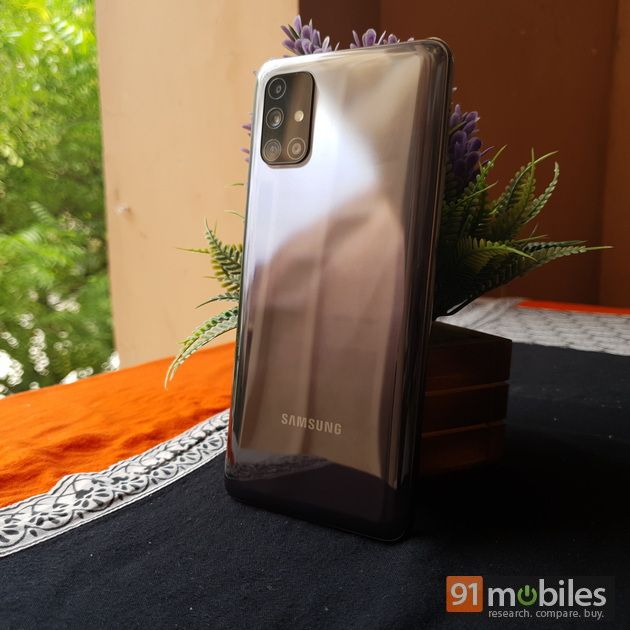
The Samsung Galaxy M31s, which takes over from the M31, is one such phone which is part of the M series, but is priced closer to the Galaxy A series. The device will cost you Rs 19,499 for the base variant which is about as much as the Galaxy A31 (review). However, the M31s packs in some compelling features which surely make it a worthwhile option in its segment. It is a mix of some of M series trademark attributes such as big battery, and camera hardware from the A series. Read on to find out if the M31s is really a cut above its rivals.
Verdict
The Galaxy M31s builds upon the experience offered by the Galaxy M31 (review) and undercuts the more premium Galaxy A51 (review) in terms of specs. Consequently, while the pricing has increased slightly, the M31s is a worthwhile option for users who want the best of Samsung on a budget.
Design and display
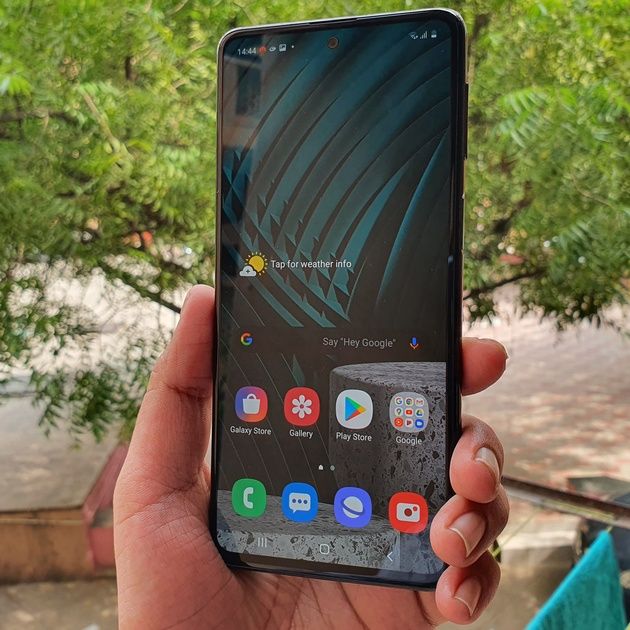
The M31s sports a plastic unibody design which appears quite premium with its glossy finish and gradient colour. The phone is offered in two options which are Mirage Blue and Black, of which I have received the latter for review. It is a kind of pleasant grey-ish design which becomes more prominently silver at the top… a nice finish in my opinion. However, since it is plastic, it can scratch more easily than glass, so it’s strange that Samsung has not packed in a clear silicone case. There is no fingerprint sensor on the back and instead, you get one on the side which is integrated with the power button. An L-shaped quad-camera setup quite identical to the M31 is present on the otherwise plain back.
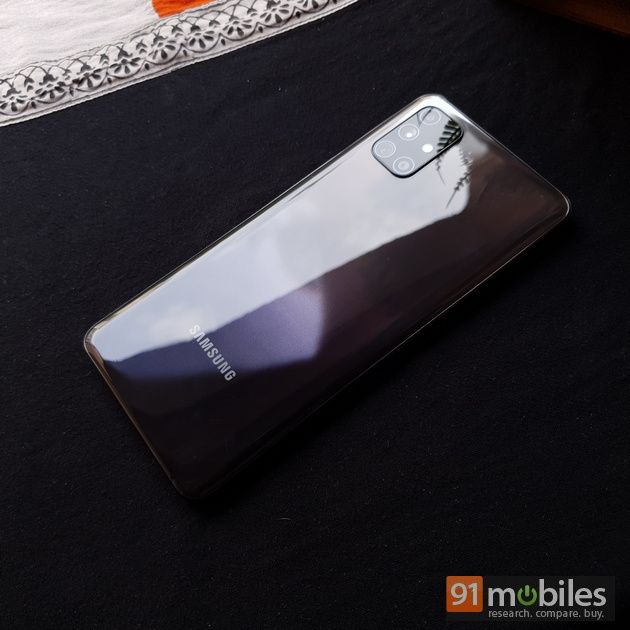
The curved back panel and smooth frame give it a comfortable grip although it is still difficult to use with just one hand, which can be attributed to the device’s weighty design. The M31s is also slightly on the thicker side at 9.3mm thanks to its beefy 6,000mAh battery. On the bottom, there’s a 3.5mm headphone jack along with a Type-C port and a mic. The left edge of the phone is empty save for the dual-SIM + microSD slot, while the right of the phone has the volume rocker placed high along with the power button. Overall in the design department, nothing much has changed since the M31 except for the fingerprint sensor.
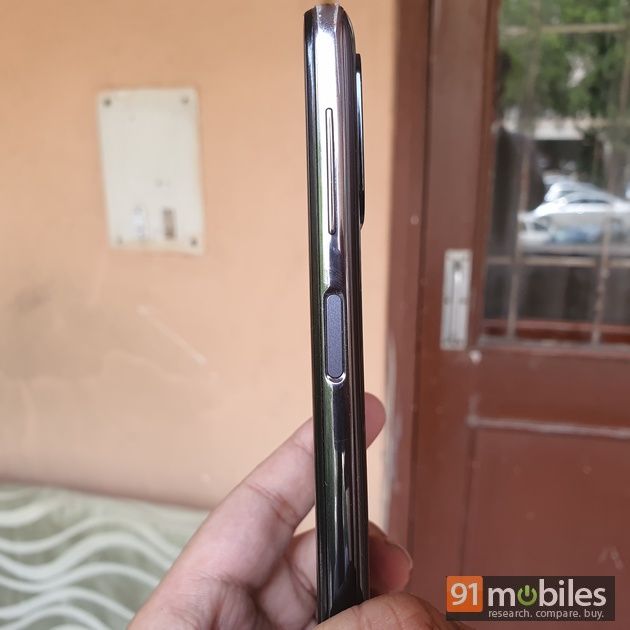
As far as the display is concerned, you again get pretty much the same deal as the Galaxy M31, but with a slight change. Instead of the Infinity U-panel, Samsung has opted in for a more trendy punch-hole style Infinity O display. The bezels surrounding the screen and the punch hole itself are minuscule which provides for an immersive viewing experience. The M31s has a 6.5-inch display, slightly bigger than the M31’s 6.4-inch screen, but has the same Super AMOLED panel at FHD+ (1,440 x 2,400) resolution.
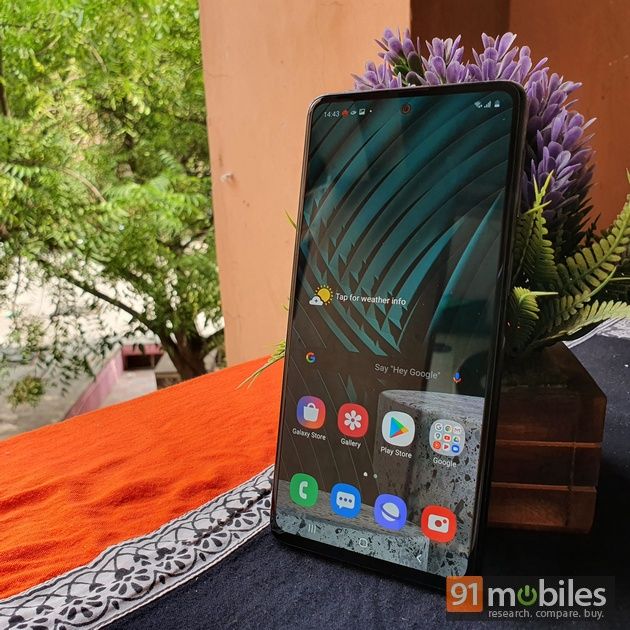
Now Samsung has always been in the business of creating some of the finest displays I’ve seen on today’s smartphones and it comes in as little surprise that a similar, if not better experience, is offered on its own devices. The M31s has one of the nicest and most colour accurate panels in its price segment. It is vibrant and has a great dynamic range and viewing angles thanks to the AMOLED nature. It’s bright enough to read under the harshest sunlight and goes significantly dim at night. I think you know the deal when it comes to Samsung smartphones and their displays, as they are almost always the best in the segment. A case can be made for cheaper Realme and POCO phones having a higher refresh panels. However, for now, it seems that Samsung is keeping anything over 60Hz for its top-tier S series and Note series devices.
Cameras
The Galaxy M31s borrows from its predecessor in terms of camera arrangement but with a few changes in the sensors. The primary camera on the device is a 64MP Sony IMX682 sensor instead of the GW1 sensor on the M31. The ultra-wide lens is a 12MP sensor with a 123-degree field of view while the other two are 5MP depth and 5MP macro sensors. The M31s takes some cues from the Galaxy A series in terms of image processing and colour accuracy.
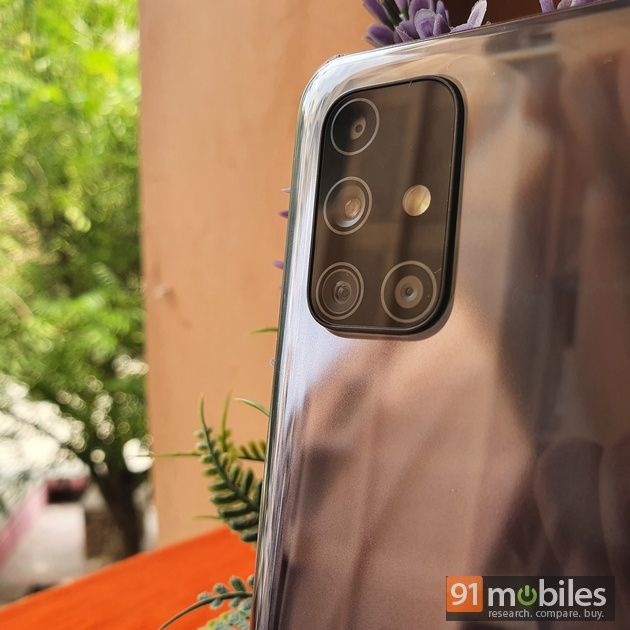
In typical Samsung fashion, the M31s produces detailed photos with good focus and slight oversaturation. The contrasty photos pack in a good amount of exposure and the AI scene does bring in more details according to the scenario, but at the cost of pumping up colours unnaturally high.
As for the remaining sensors, all of them worked as expected. The ultra-wide lens produced decent amount of details at the centre of the frame but at the edges, the pictures get warped and slightly blurry. I was impressed by how accurately the colour temperature matched with the primary lens, something that most OEMs at this price are not able to get right. The bokeh shots were good thanks to the 5MP depth camera although the edge detection isn’t the phone’s strongest suit. Something I feel that all OEMs can do away with is a dedicated macro lens that has a very niche use case and in most scenarios, the results aren’t great.
On the subject of night photography, the Galaxy M31s does provide you with a dedicated Night mode which is quite useful for substantial noise reduction and boosting the exposure of low-light shots. However, the ISP (image signal processor) can only retain so much detail when the lighting dips. The sensor requires the assistance of street lighting to get respectable shots while the wide-angle and macro sensors are not very usable at night. Overall, though you should be getting your money’s worth as far as night photography is concerned.
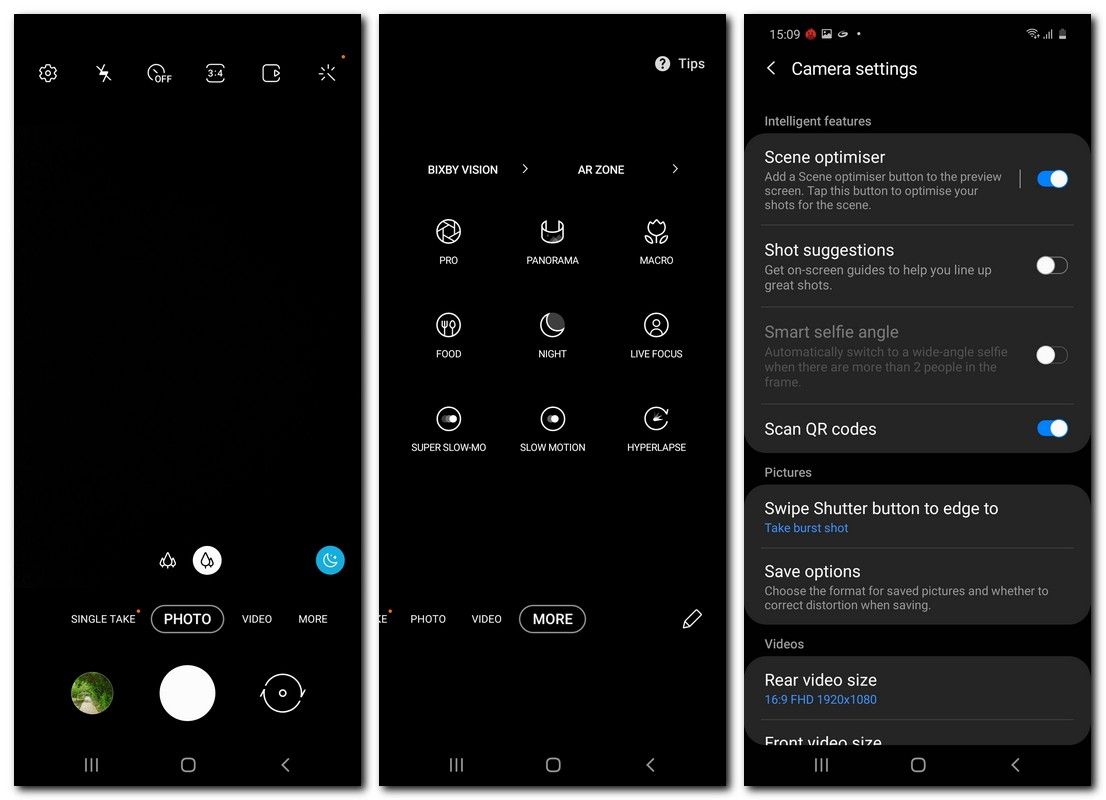
The front of the device packs in a 32MP selfie shooter, which is what I have also seen on the Galaxy A51. It uses the same pixel-binning formula as the M31s’ 64MP primary sensor to give detailed 8MP shots. You can also shoot 4K video at 30fps from the front which is not something you see in the segment. Selfie quality is quite good with the camera preserving my skin tone and facial features although I had to contend with the usual Samsung brand of oversharpening as well. Portrait mode photos from the front were also quite good mainly because the separation of my face from the background is nice.
Performance and software
Samsung is sticking with its guns on the M31s with the same Exynos 9611 SoC that has been making the rounds on several A series and M series phones over the past year. It is an octa-core SoC based on a 10nm manufacturing process and a base clock speed of 1.7GHz while the performance cores can be boosted to 2.3GHz. Rival phones from the likes of Xiaomi, POCO and Realme use Snapdragon 720G / 730G or MediaTek G90T chipsets, which are more performance-oriented. If benchmarks are looked at, the M31s’ scores do fall behind. On AnTuTu, the device has a score of 187,331 while Geekbench 5 showed single-core and multi-core scores of 292 and 1,290 respectively. For comparison, the Realme 6 Pro has an AnTuTu score of 285,167 and Geekbench showed single-core and multi-core scores of 569 and 1,689.
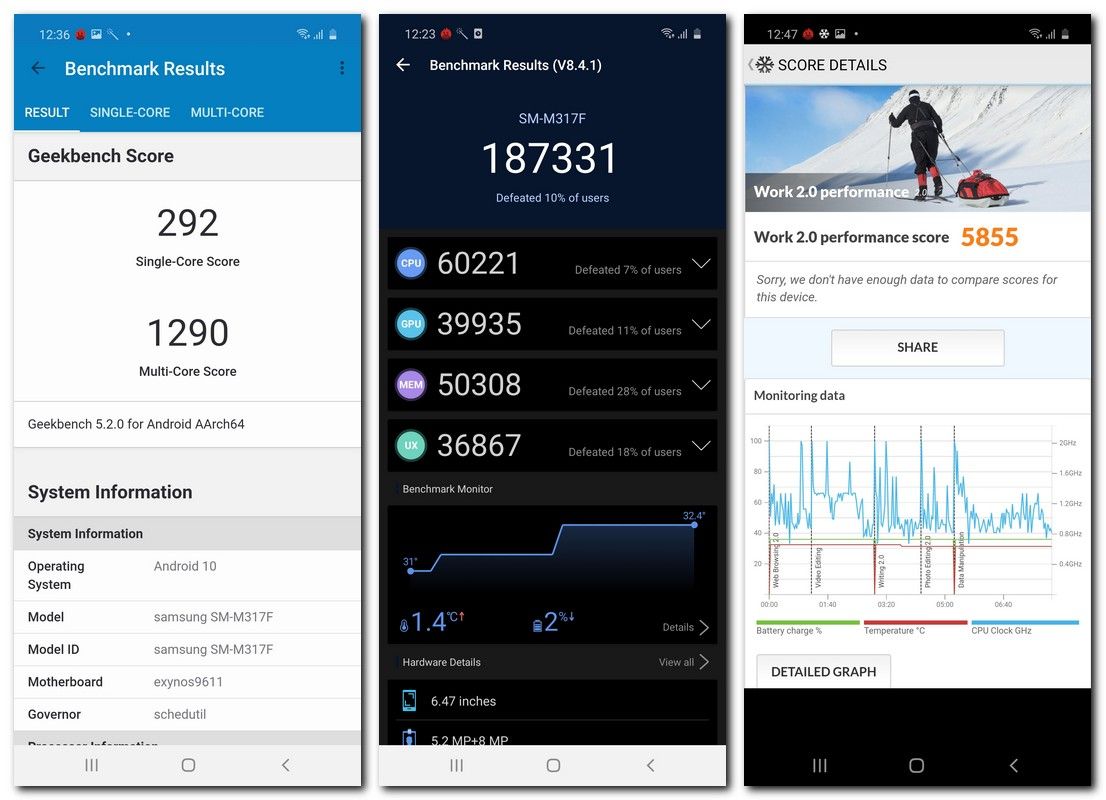
Lower benchmark scores are however not an indication of the smooth browsing and navigation experience on the device. You get up to 8GB of RAM along with 128GB of UFS 2.1 storage which also help in this regard. Your day-to-day experience, which would involve opening of multiple apps in the background or browsing through several tabs opened on Chrome should not face any hindrance. Perhaps the only point where you are bound to face problems is graphics-intensive tasks such as playing PUBG Mobile. The game becomes sluggish at max graphics settings and you have to reduce the frame rates to High from Extreme to get fewer frame drops. Heating on the device starts becoming apparent after the 1-hour mark.
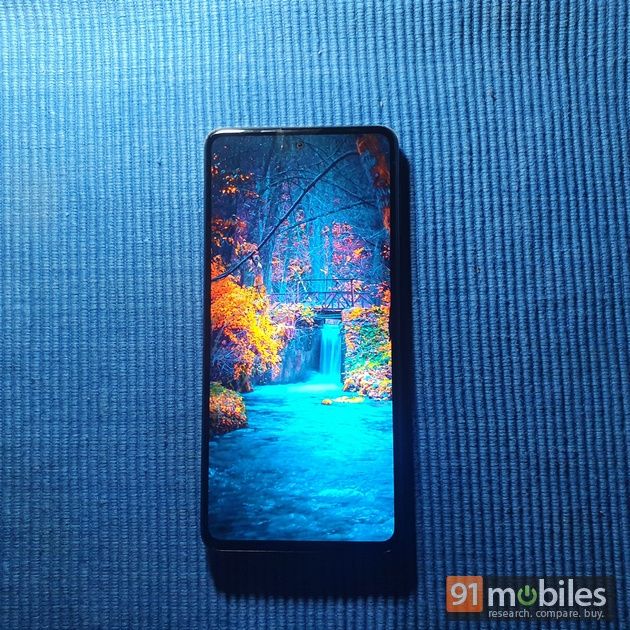
The side-mounted fingerprint sensor is a good implementation but the authentication could be slight hit-or-miss. Most of the times, the phone unlocks as soon as one hit the power button. Other times it takes a couple of tries to get it right but in general, I have no issues with the sensor. There is also face unlock, which doesn’t work very well under low-lighting conditions but is otherwise the fastest way to unlock the device. The single bottom-firing speaker is not the loudest but does pack in a healthy amount of bass and does not sound quite as tinny as many of the other phones in its category. Call and microphone quality on the device were up to the mark as expected.
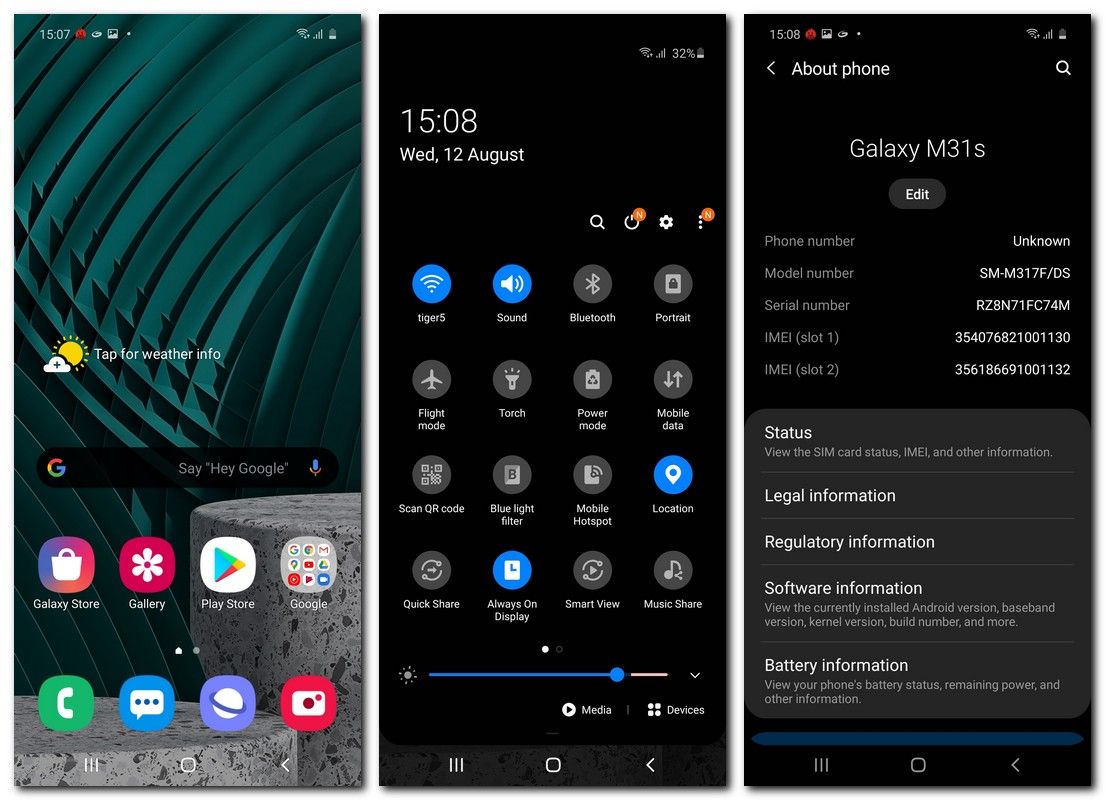
Moving on to the software part of the device, like all Samsung phones this year, the M31s boots the proprietary OneUI 2.0 skin based on Android 10. While the major aspects of the UI have been explained in more detail in my colleague’s Galaxy M31 review, here is a bit of lowdown on what you can expect. Smooth sailing with the UI, simplified settings option, tons of theme customisations, concise to the user’s needs and packed with the usual Samsung bloatware, most of which cannot be uninstalled.
Battery
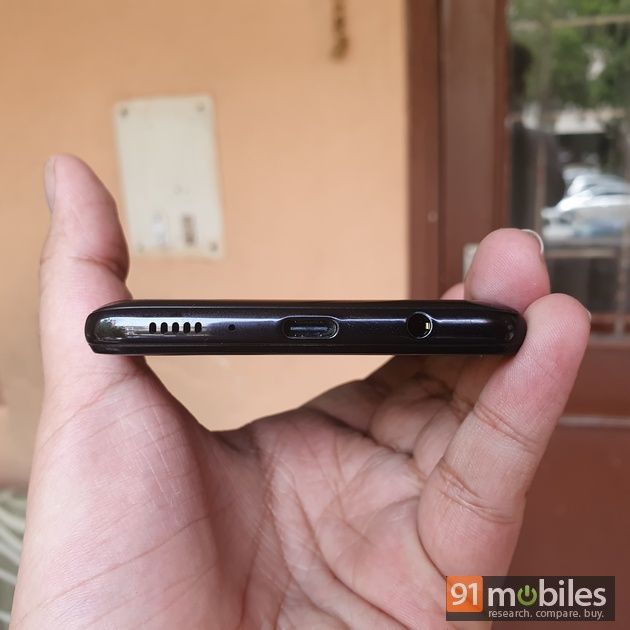
Trademark M series features include a big and long battery life. The same has been carried over to the Galaxy M31s with its humungous 6,000mAh cell. On the M31 you could find the same battery capacity, but this time around Samsung has provided faster 25W charging inside the box. Also, you get a Type-C to Type-C cable, and the M31s can actually be used as a power bank to charge other phones. My standard battery test, which looped a single video on repeat, saw the phone last an incredible 32 hours, making it one of the longest-lasting devices that I have tested. With the faster charging speeds, the device also juices up faster than the M31 at about 110 minutes while the latter took nearly 3 hours.
Final Verdict
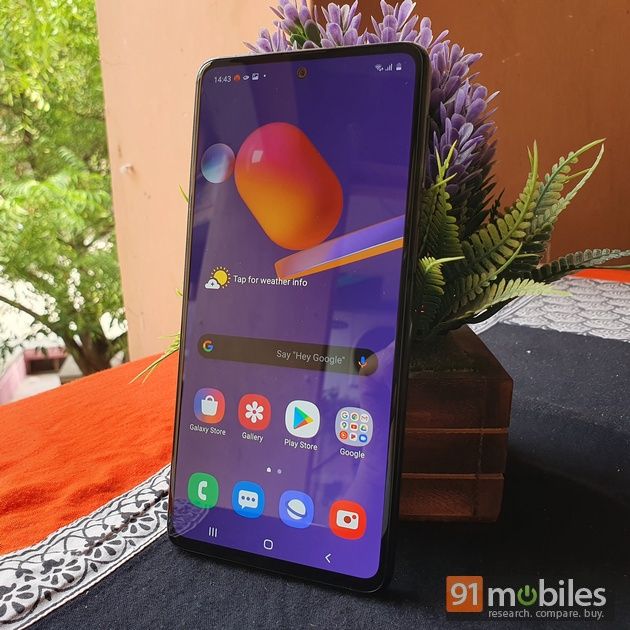
There is no concrete reason for anyone not to buy the Galaxy M31s. The M31s gives you the Samsung brand name and good value for money too. Yes, the pricing has increased, but with it, you get an improved camera setup, a punch-hole style display and faster charging speed. The phone certainly undercuts the Galaxy A51 and A31 by offering largely the same specs at a lower price tag, which could result in some confusion. That said, if you aren’t into gaming much, the Galaxy M31s makes for a great buy.
Editor’s rating: 3.5 / 5
Pros
- Best-in-class battery
- Great display
- Daylight photography is good
Cons
- Misses out on high screen refresh rate
- Not so great for gaming
- Bloatware
from 91mobiles.com https://bit.ly/31SxF4M
via gqrds




No comments:
Post a Comment